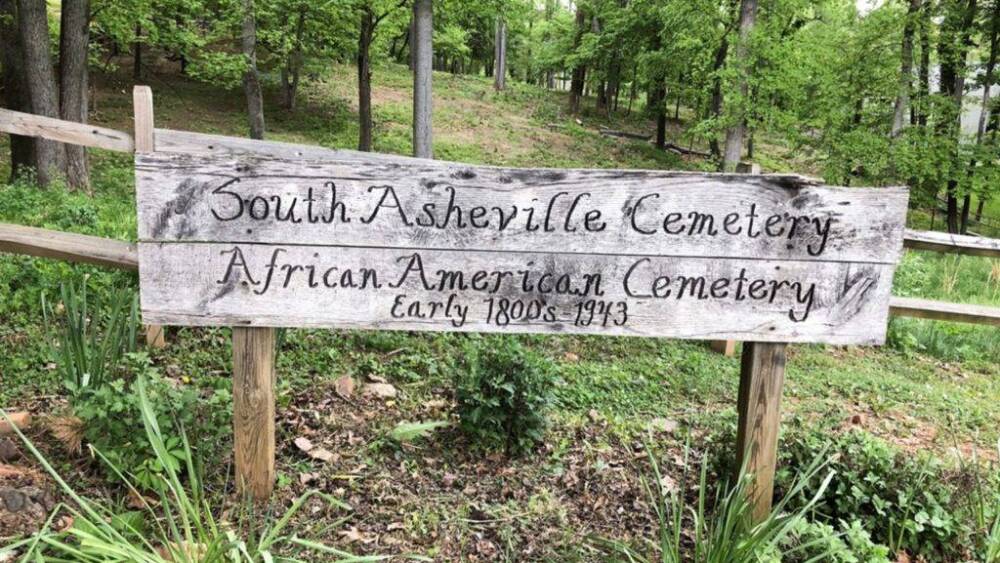DYK: The oldest public African-American cemetery in Western North Carolina is in Asheville?
Approximately 2,000 African-Americans are laid to rest in Kenilworth’s two-acre South Asheville Cemetery (20 Dalton St.), which began as a slave burial ground in the mid-1800s. Located behind the St. John “A” Baptist Church, its first caretaker, George Avery, was a slave owned by William Wallace McDowell (1823 – 1893), a major in the Confederacy and the owner of the Smith-McDowell House + surrounding property, which included the cemetery. And, Kenilworth was its own town until 1929, when it (and the cemetery) was annexed by the City of Asheville.
We dug into the timeline and history of the cemetery and found out all about this historic site for today’s #ThrowbackThursday.
1865: George Avery joined the Union Army (Company D, 40th United States Colored Troops) after McDowell recognized that the Confederacy was going to lose the war. After the end of the Civil War, Avery returned to Asheville and oversaw the cemetery until his death in 1940.
1940s: Care of the cemetery ceased and the area turned back into forest when the City closed the cemetery after annexing South Asheville. The area surrounding the cemetery became two distinct neighborhoods at this time: Kenilworth, and the historically-black community of Shiloh. The last person buried at the cemetery was Robert C. Watkins, in 1943.
1980s: Care of the two-acre site restarted in the 1980s when members of the church, particularly George Gibson (a former gravedigger and assistant to Avery) + George Taylor, started restoration efforts. They worked for two years before locating Avery’s grave.
93: headstones with identifying information in the cemetery. Most graves are not marked with names or dates. George Avery is the only known slave buried in the cemetery who has a headstone. Many graves are marked by small, handmade crosses or stones, and many are unmarked, or markings have disintegrated. A few stones are marked with the symbol of the Masons, indicating that the people buried there might have helped build some of Asheville’s most historic structures.
$7: The price charged to African Americans by the McDowell family to be buried in the cemetery. $6 went to the McDowell family, and $1 went to the gravedigger.
1,963: Graves that have been identified so far in the cemetery. Up to 5,000 people may be buried in the cemetery, but most estimates put the number at around 2,000.
In 1989, UNC Asheville started the South Asheville Cemetery Project. Helmed by professors Dee Williams and Lewis Armmond, the project collected oral histories from African-American residents of Asheville who knew people buried in the cemetery. Interviewees discuss names, dates + burial traditions. The project is housed at UNC Asheville’s Ramsey Library, in their Department of Special Collections. The collection also includes newspaper clippings, photographs + papers on the project.
In 2014, students + alumni of Warren Wilson College created a GIS (Graphic Information System) grave map of the site after it was mapped by the College’s archaeology crew and AmeriCorps teams, who located gravesites that were unmarked (or no longer marked) based on cavities in the earth. Download the original archeological map (a .pdf) and the geo-referenced Google Earth file (a KML file) here. Check out a video about the project here.
Poet Glenis Redmond wrote a piece dedicated to the cemetery. Read it here.
Want to help? The cemetery’s sole support is from volunteers. Contact Ellen Pearson of the South Asheville Cemetery Association if you’re interested in volunteering at epearson@unca.edu.
I lived in Kenilworth for a year, but I only heard about this historic site recently. It was fascinating to delve into the history of the cemetery and of Asheville, which has been preserved through the efforts of the South Asheville Cemetery Association, UNC Asheville, Warren Wilson College, local + national news media and the local community.
If you have a chance to visit, you’ll find a peaceful pocket of green in the middle of Kenilworth. Reading over the gravestones that were still legible was a moving experience. I was happy to find George Avery’s tombstone at the top of the hill.
I’m excited to see what the next chapter will hold for this incredibly important spot. Have you been to the South Asheville Cemetery, or do you know something we missed about its history? Tell us about it by sending an email to hello@avltoday.com, or write us a note over on Facebook, Twitter, or Instagram.














